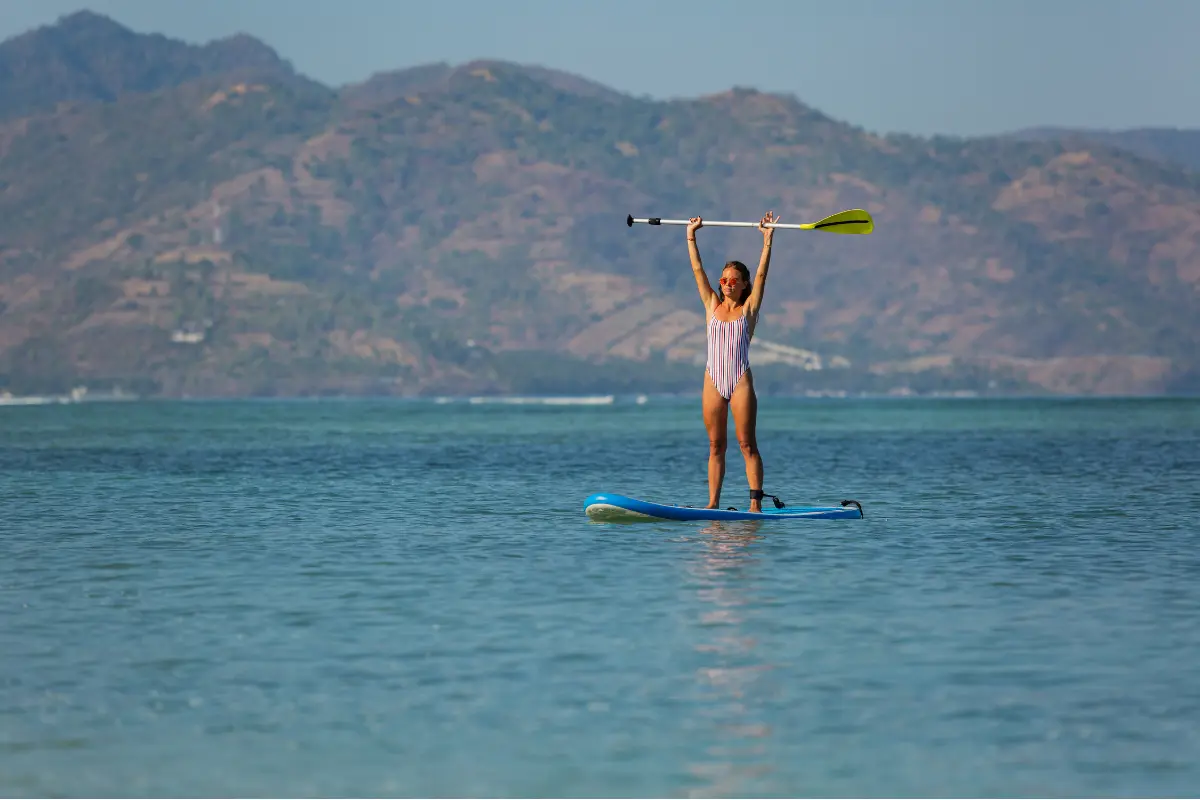Paddleboarding is a water sport where players lie or kneel on a paddleboard or surfboard in the ocean or another body of water, propelling themselves in a swimming motion with their arms. Paddleboarding is available in numerous areas in Beach Haven, New Jersey, including marinas, surf shops, and other places.
For novice paddlers, the stand-up paddle board (SUP), is an excellent and simple-to-learn sport. But do not be fooled by that! Stand-up paddleboarding engages nearly every muscle group in your body.
Balancing
Before beginning stand-up paddleboarding (SUP), novices need to become proficient in balancing. Start with calm seas, such as those available at Beach Haven, and kneel on the board. Before attempting to stand, make sure you are comfortable paddling in this posture. When you’re ready, carefully stand up while keeping your stance wide for stability. To keep your balance, keep your core active, and look forward. To steer well, practice paddling on both sides.
Coaching
For those who are new to paddleboarding, Beach Haven paddleboarding lessons and rentals provide excellent advice along with equipment and skilled coaching. Always start small and work your way up to greater confidence and proficiency, taking pleasure in the calm seas as you go.
Choosing the right paddleboard
You need to select the best paddleboard for you as a beginner. An all-around paddle board is the most popular kind and ideal for beginners. You want something durable that won’t mind being knocked around by a novice, but also something steady that can assist you with balance in the beginning.
Paddling on a river versus paddling in a lake
It will be simpler to paddle on a lake or river than in the ocean, where there is a greater chance of turbulence from waves, currents, and tides. Since a touring paddle board is long and thin and can handle tougher conditions well, it is a good choice for ocean paddle boarding.
Most paddle boards are suitable for use in a lake or river. However, since they are lightweight and easy to transport to the next location, inflatable boards are a great option if you are traveling between lakes.
Look towards the horizon
The first impulse we have when we start paddling is to glance down at the board, watch the water sloping at the edges, and hope we don’t fall in! But you should maintain your head up, your back straight, and your body weight over your toes for optimal stability. It may sound absurd, but if you are looking down at your toes, you might bounce back on your heels and end up in the water! Check out YouTube’s video of SUP standing up.
Using a leash helps
This truly applies to all stand-up paddle boarders, but you and everyone else will be safer when paddling if you realize early on how important a leash is in any kind of situation. Depending on the style of paddling you undertake, there are many kinds of attachment points and leashes available.
Whether you have rented a SUP and paddle, recently purchased your own equipment, or have gone out a few times, this information might affect how you paddleboard going forward.



![10 Best Bags for Nurses | Personal Recommendation [2023] 4 Best Bags For Nurses Reviews in 2021](https://knowworldnow.com/wp-content/uploads/2022/12/Best-Bags-For-Nurses-Reviews-in-2021.webp)



![F95Zone Games - The Ultimate Guide for 2021 [F95Z Guide] 8 F95Zone Games](https://knowworldnow.com/wp-content/uploads/2021/07/ArTtW5LrK3b-z-0-y-637f48d86203817a9042a857.webp)